
Two of the main software development methodologies are Agile and Waterfall. Despite their similar popularity, the Agile and Waterfall methodologies offer two very different ways to deliver a project. The main difference between Agile and Waterfall lies in the structure of the approach.
Projects following the Waterfall methodology are completed sequentially, whereas projects following the Agile methodology are completed iteratively in a cycle. Of course, deciding which methodology is best for your projects wholly depends on the scope of your project and what it entails. Let’s look further into the Agile vs Waterfall debate, shall we?

Considering the number of product and project development methods that are employed in business today, it certainly takes good acumen and understanding of each approach to choosing the best method for your projects. While each approach has its individual advantages and disadvantages, and some are best suited for specific projects, the aim of all project management methodologies is to aid your team’s work processes and streamline the completion of projects.
Agile vs. Waterfall: Key Differences
- Process structure
- Customer involvement
- Team collaboration
- Flexibility to change
- Time frame
- Budget
One of the most notable differences between the Agile methodology and the Waterfall methodology is the level of flexibility involved in each. Where Agile prides itself on being an approach that is flexible and continuously evolving, Waterfall is known to be more rigid and stricter in terms of process structure.
So, which approach would work best for you and your team when it comes to Agile vs Waterfall project management?
Agile Methodology
The Agile methodology is a type of project management process that is mainly used for software development, where requirements and solutions evolve through the collaborative effort of self-organizing and cross-functional teams and their customers. It is also gaining traction in other industries due to its flexibility and adaptiveness, as well as its focus on collaboration, continuous improvement, and high-quality results.
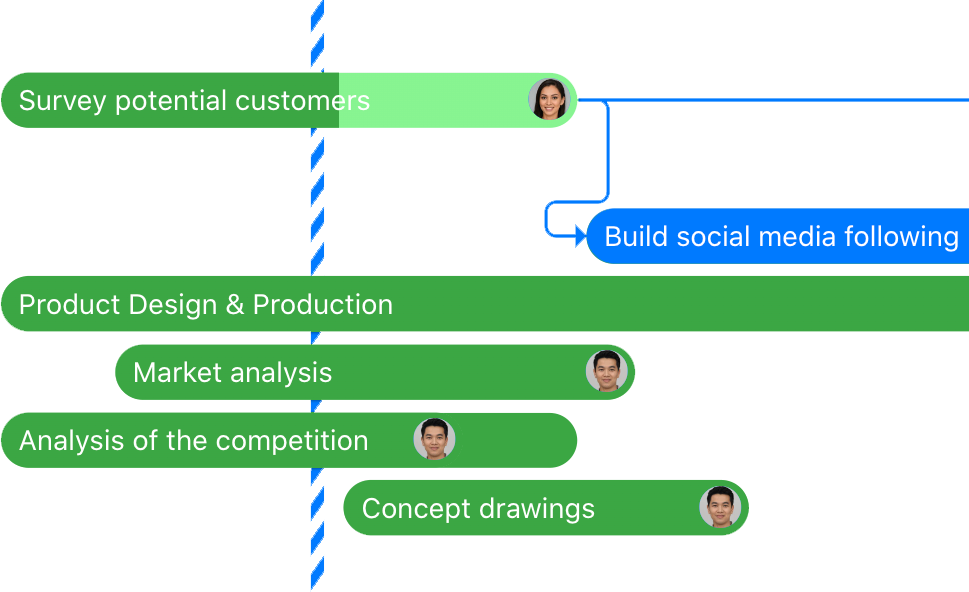
Emerging from the values and principles of the Agile Manifesto, it was created as a response to the shortfalls of the Waterfall method. Developers realized they needed something different to the linear, sequential approach of the traditional Waterfall methodology in order to keep up with the improving and innovative culture of the constantly-developing software industry.
The Agile methodology principally is a mindset and a way of thinking rather than just a standard structure and process to follow in business. Agile uses six main deliverables to create the product and to track progress:
- Product vision statement
- Product roadmap
- Product backlog
- Release plan
- Spring backlog
- Software increment
Agile also uses visual tools such as a Kanban board and a burndown chart to help with the progress tracking and to keep within deadlines.
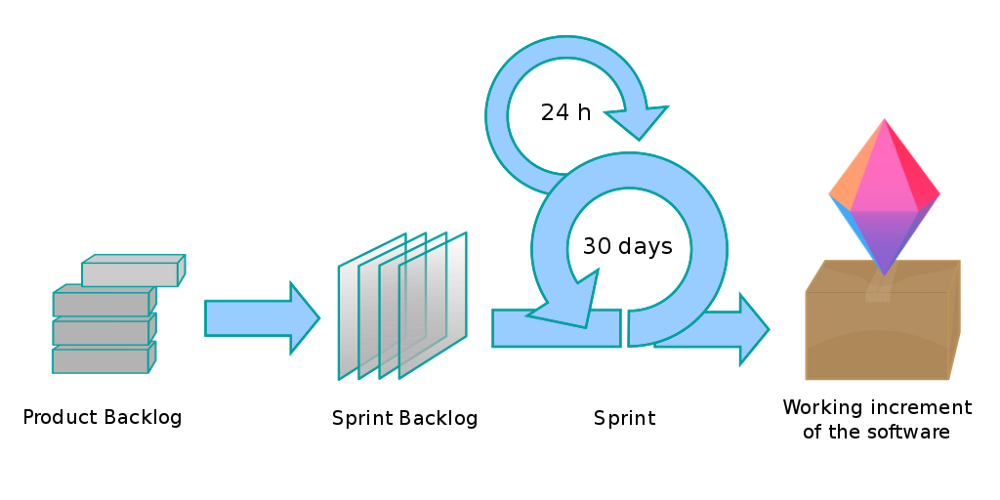
Agile project management uses frameworks to develop and deliver a product. One of the most popular frameworks is Scrum. Scrum is heavily attached to Agile, but it’s important to note that while Scrum is Agile, Agile is not Scrum. The ideas behind the Agile methodology are implemented by using Scrum which aims to develop, deliver, and sustain complex products through collaboration, accountability, and iterative progress.
Using this framework can influence a higher quality product as it encourages collaborative decision-making and constructive feedback from customers.
Agile projects encourage teamwork, self-organization, and accountability. Thus, Agile is an effective process for teams looking for an adaptable approach to product development. Due to the approach’s focus on conducting frequent inspection and adaptation cycles, Agile allows for rapid delivery of high-quality projects. It also provides teams with a solution to handle the common issues of project management such as cost, scope, and schedule.
Now, to aid you with your Agile vs Waterfall decision, here’s a list of pros and cons for you to peruse:
The Pros and Cons of the Agile Methodology
Pros:
- Customer feedback and involvement are prioritized throughout the entire process. The development process is often more user-focused, which means if you’re delivering a project your customer expects to be heavily involved in, then Agile may be the methodology for you. It’s a process that requires customer input and feedback not just at the beginning of the project, but throughout the entirety of the delivery.
- Synchronized product testing and product building. Because testing starts from day one, this could result in a higher quality product. Through testing and the reviews conducted during each iteration, issues and defects can be identified and rectified as early as possible.
- Agile is agile, embracing and encouraging flexibility and adaptability to change. The iterative and incremental structure of Agile makes it feasible for changes to be made throughout the development process. Items in the product backlog can be refined and rearranged with changes or new ideas planned for the next iteration.
Cons:
- Practicality and necessity of team and company commitment and collaboration. The most notable disadvantage of Agile is perhaps that while it is great in theory, it is actually harder to achieve in practice. Agile is a practice that requires full commitment from the right group of people who can work naturally and flawlessly together in order to deliver successfully.
- Can be costly to implement. It is also a costly and time-consuming venture for companies who want to adopt this process of development for the first time – think about the resources and education required in order to fully train every employee in your company. It’s not unusual to not get it on the first go.
- Teamwork is needed to make the dream work. Close working relationships are needed for Agile to truly work. This means that not only do the development team need to get along, but also everyone else involved in the project such as stakeholders and senior management. Having everyone in the same space and trying to harmonize all involved is not an impossible feat, however, will require a lot of time and effort. Using project management software such as Zenkit can help close the gap.
Waterfall Methodology
The Waterfall methodology is one of the more traditional project management methodologies. It is a linear, sequential design approach where progress flows downwards in one direction — like a waterfall. The methodology asserts that moving to the next phase of development can only happen after the current phase has been completed, and each phase must occur in the following order:
- System and software requirements
- Analysis
- Design
- Coding
- Testing
- Operations
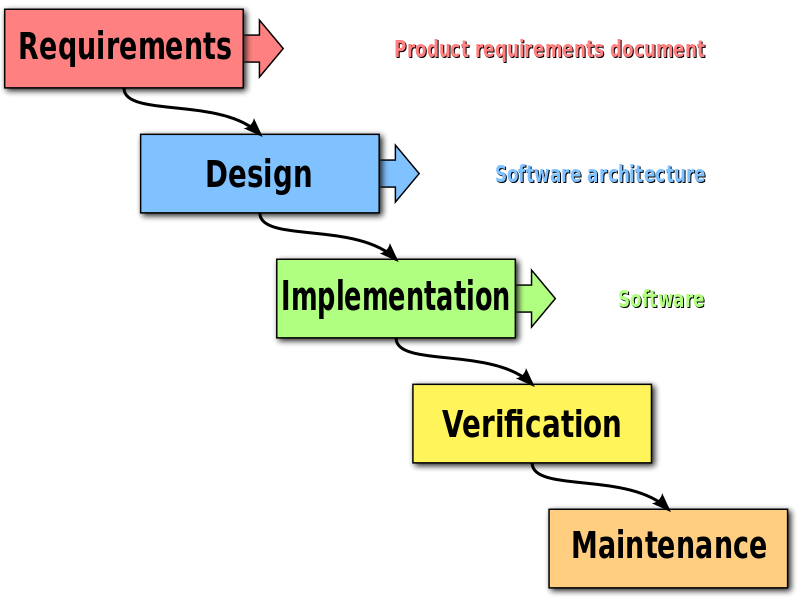
The Waterfall methodology is a process known for its stringent process structure that leaves little room for design changes in the early stages of development. The reason for this is because the methodology stemmed from the manufacturing and construction industries, wherein any changes made to its structured physical environments would have resulted in exuberant costs. As an early attempt to provide structure, guidance, and regulation to the development of large and complex application systems, problem-solving using the Waterfall methodology improved processes by having clearly defined structures in place.
Another thing it is known for is its emphasis on documentation. Recording information is strongly promoted within the Waterfall methodology and seen as a byproduct of the development process, rather than an afterthought. This is due to the idea that human work should always be verified and prepared for unexpected modification. For example, if a worker was to leave during the development process, their replacement can start where they left off by familiarizing themselves with the information provided through the documentation.
Now to add the Waterfall pros and cons to the Agile vs Waterfall debate:
The Pros and Cons of Waterfall
Pros:
- The Waterfall methodology is great for measuring, analyzing, and tracking your project’s progress. Measuring progress can be easier with the Waterfall methodology as each stage of the development process has clearly defined start and end points, and because the full scope of work is known in advance. System and design requirements are defined at the beginning of the project, allowing for minimal resource wastage, and ensuring everyone involved is aware of the expectations.
- Follow the instructions in order. Compared to other project management methodologies, Waterfall is a rather intuitive methodology with a structure that is simple to follow. All projects follow the six aforementioned phases in the subsequent manner, which makes it easier for first-timers to adopt. The emphasis on documentation also allows for newcomers to ease into the process.
Cons:
- Leaving everything until the last minute (or so it feels). The technical risk can be high, due to the fact that testing the product’s design or architecture happens towards the end of the development process. On top of that, because most changes don’t occur until the very late stages—if they happen at all—there may also be product risks.
- Form over function. Speaking of changes, one of Waterfall’s biggest pitfalls is its rigidness towards changes in the development of the product and the process itself. It makes it almost impossible for new ideas to be included and can jeopardize customer satisfaction, as well as the quality of the final product.
- Customer involvement is not a possibility with Waterfall. Unlike Agile, Waterfall does not require a huge deal of customer involvement. While this may not seem like a disadvantage to every client, there are certain industries where customer involvement such as providing feedback and clarifying requirements is an imperative factor of the project.
Agile vs Waterfall: And the Winner Is …?
As you can see, both methodologies have their fair share of advantages and disadvantages. Deciding which method truly is best for your projects wholly depends on the criteria and objective of your project. If you have high amounts of team collaboration and are constantly adapting your processes, then the Agile approach is for you. Alternatively, the Waterfall approach is the method for your project if documentation and clearly defined structures improve your project delivery.
If you still can’t decide between Agile vs Waterfall for your projects, here is a quick summary of the key differences between Agile vs Waterfall:
- The Waterfall methodology is arguably best suited for large teams with big projects that have a maximum time frame of a year.
- Employing Agile processes requires a flexible, adaptable, and agile-thinking team.
- You’ll never lose data with the constant step-by-step documentation of your development process using Waterfall.
- Agile is about quick turnovers, experimenting, and innovating throughout the project development.
Final Thoughts
So, to conclude the end of the Agile vs Waterfall debate, which methodology takes the cake?
The answer, of course, lies within the scope, requirements, and nature of your project. There is no such thing as a one-size-fits-all methodology, and both include features that are beneficial in their own right. Due to the flexible and adaptive nature of Agile, projects that would benefit from using it are ones that require a level of complexity and uncertainty, such as developing a product or service that hasn’t yet been built by the team. On the other side, projects that require maintaining stringent phases and deadlines, or projects that have been done various times over where chances of surprises during the development process are relatively low, should perhaps consider implementing the Waterfall methodology.
And, if neither Agile nor Waterfall works for you and your team, there are other project management methodologies that could be best suited—there is more to the project management world than Agile vs Waterfall.
Don’t forget to let us know which methodology works best for you!
Cheers,
Dinnie and the Zenkit team


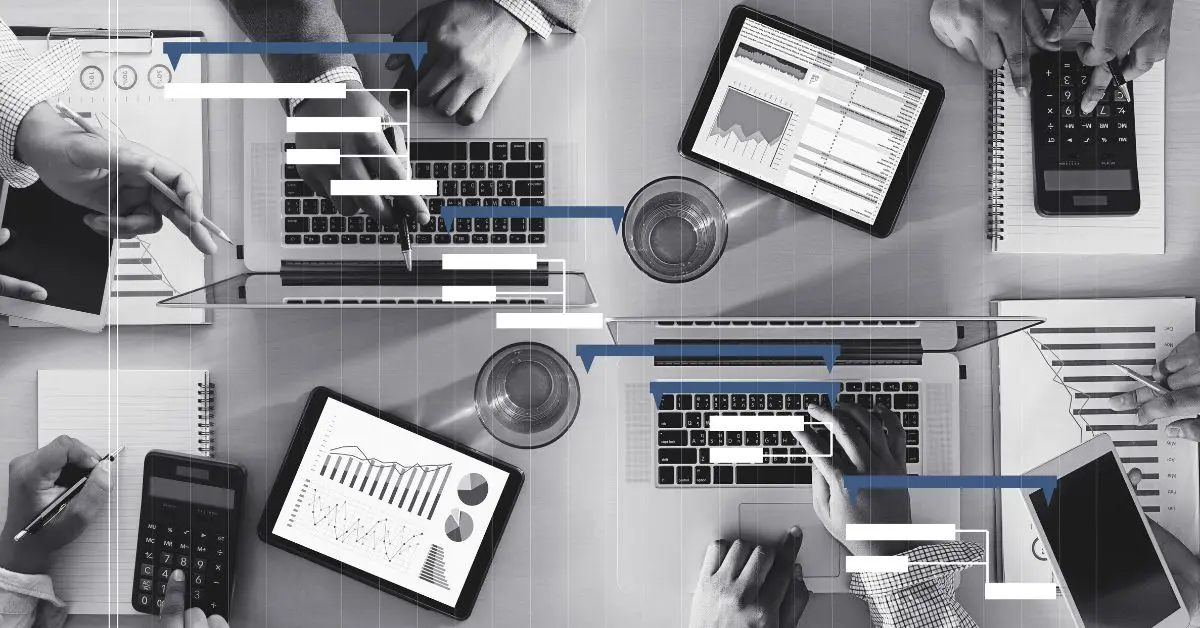
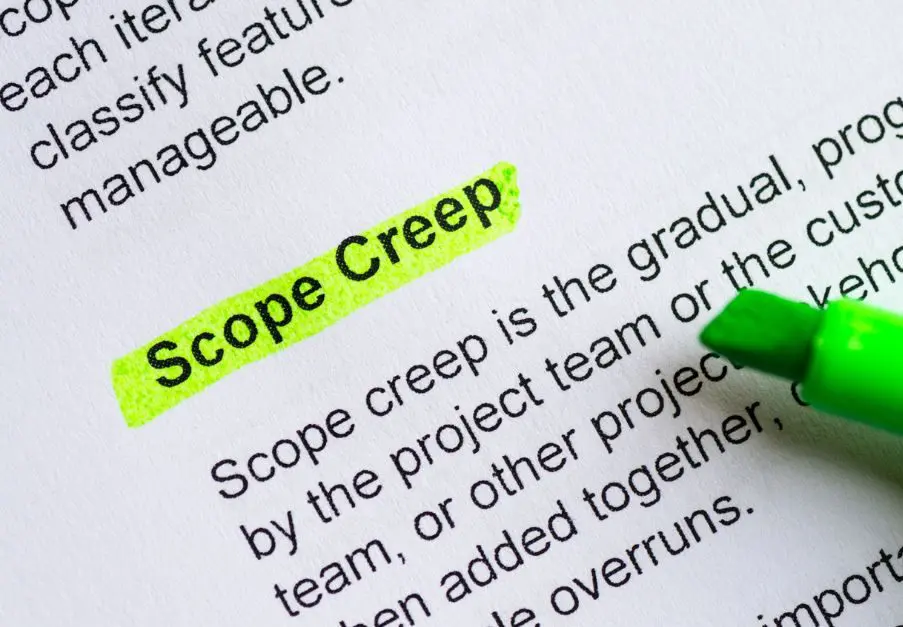

Leave a Reply